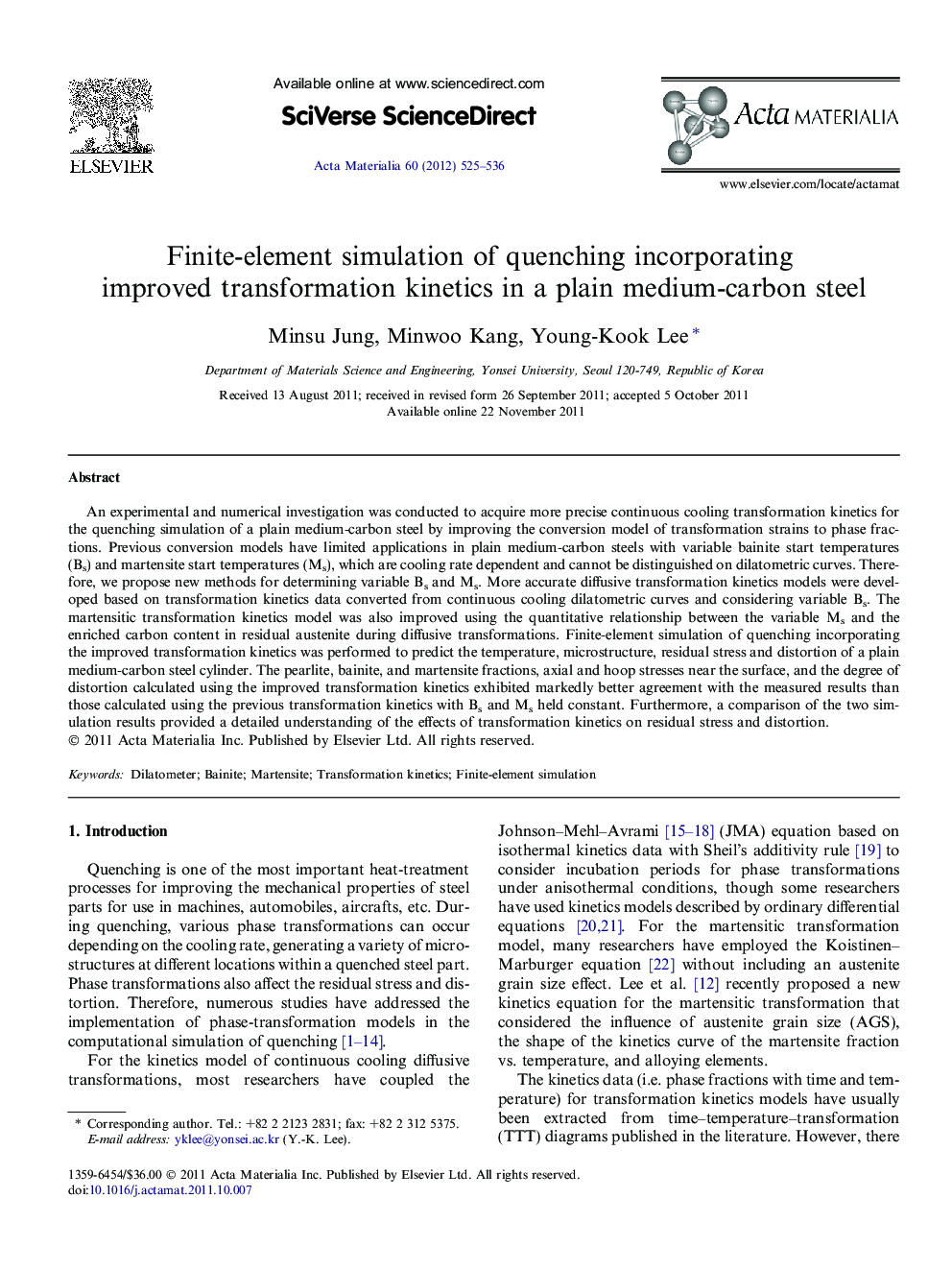| Article ID | Journal | Published Year | Pages | File Type |
|---|---|---|---|---|
| 1446694 | Acta Materialia | 2012 | 12 Pages |
An experimental and numerical investigation was conducted to acquire more precise continuous cooling transformation kinetics for the quenching simulation of a plain medium-carbon steel by improving the conversion model of transformation strains to phase fractions. Previous conversion models have limited applications in plain medium-carbon steels with variable bainite start temperatures (Bs) and martensite start temperatures (Ms), which are cooling rate dependent and cannot be distinguished on dilatometric curves. Therefore, we propose new methods for determining variable Bs and Ms. More accurate diffusive transformation kinetics models were developed based on transformation kinetics data converted from continuous cooling dilatometric curves and considering variable Bs. The martensitic transformation kinetics model was also improved using the quantitative relationship between the variable Ms and the enriched carbon content in residual austenite during diffusive transformations. Finite-element simulation of quenching incorporating the improved transformation kinetics was performed to predict the temperature, microstructure, residual stress and distortion of a plain medium-carbon steel cylinder. The pearlite, bainite, and martensite fractions, axial and hoop stresses near the surface, and the degree of distortion calculated using the improved transformation kinetics exhibited markedly better agreement with the measured results than those calculated using the previous transformation kinetics with Bs and Ms held constant. Furthermore, a comparison of the two simulation results provided a detailed understanding of the effects of transformation kinetics on residual stress and distortion.
